India News
Modi government in the final year of its tenure, goes big on celebrations but dark spots remain
Published
8 years agoon
By

Going to start its fifth and final year of its present tenure on Sunday, May 27, Narendra Modi government is going big on celebrating its four years to highlight its achievements in preparations for the Lok Sabha election next year.
It has come up with a new tagline – ‘Manzil Aa Rahi Hai Paas, Desh Ka Badhta Jaata Vishwas; Saaf Niyat, Sahi Vikas’, or, in short, simply ‘Saaf Niyat, Sahi Vikas’ – Clean intent, Right Development.
The party aims to build further on its biggest asset – Prime Minister Narendra Modi’s projected image and credibility. Media reports quoted a BJP source as saying, “”There is no doubt that our biggest asset is PM Modi’s credibility and there is no doubt about his intentions. We will also flag both infrastructure and welfare gains to show there is a lot that the government has achieved. But the slogan recognizes that this is a journey and ask citizens to have faith that the direction is right,” he said.
Senior leaders from the party are going to hold press conferences to highlight the government’s successes during its regime. A social media campaign is already on, and there will be a planned outreach to more than a lakh intellectuals and a ‘harmony connect’ day with Dalits.
Congress has attacked the BJP on its celebration of four years and its theme, calling it ‘Vishwasghat Divas’ or Betrayal Day and it also plans to hold protests in every district of India.
The prime minister and BJP president Amit Shah have said on several occasions that they will present the report card of their government during the 2019 Lok Sabha elections and leave it to the people to judge its performance.
There were full-page advertisements covering the front page of newspapers on Saturday, May 26, listing numerous fields where the government claims to have made major achievements. For the past week, many dailies have carried reports much along the same lines. They talked about job creation, boost to investment, accelerating pace of development, improved health of banks, benefits of reforms like demonetisation and GST, et al.
While it is difficult to take up each and every aspect, one can attempt a look at some of these.
JOBS
The latest payroll data released by the Employees’ Provident Fund Organisation (EPFO) and the National Pension System (NPS) show that around 22 lakh jobs have been created in the country in the last six months (up to February 2018). This gives the Modi government a major boost. However, this was contested by experts who said this was more likely a reflection of formalisation of jobs rather than new jobs created. They cited Niti Ayog’s statement. NITI Aayog Task Force On Improving Employment Data (2017) said that “additions to these databases may not necessarily represent additional jobs. Instead, such additions may simply represent enrollment of individuals already working but not previously enrolled in the plans or programmes.”
The government also tried to shake off its responsibility of creating jobs, shifting it to the individual instead. Amit Shah said that all the 125 crore Indians cannot get jobs and the answer to the issue of unemployment is self-employment. He claimed 9 crore people had got self-employment through the Mudra scheme and other government schemes such as Stand Up India and Startup India.
PM Modi and Amit Shah said that even selling ‘pakodas’ is also employment and is better to be a labourer than to be unemployed. The ‘pakoda’ remarks were mocked by the Opposition.
Congress president Rahul Gandhi has been a vocal critic of the BJP government’s performance on the employment front. He quoted PM Modi as saying that the BJP government would give employment to 2 crore youths every year. China gives employment to 50,000 youth in 24 hours whereas Modi government gives employment to 450 people in 24 hours, Rahul Gandhi said while campaigning in Karnataka recently.
Political rhetoric aside, the Managing Director of Centre for Monitoring Indian Economy (CMIE), Mahesh Vyas, in an article in February 2018, said that unemployment reached a 71 week high in the week ended February 25, 2018.
In May, the CMIE said labour participation rate (LPR) declined in April 2018. At 43.1 per cent the LPR in April was among the lowest. The total workforce willing to work and was waiting for jobs to become available therefore was of the order of 35 million.
Large numbers of labour force quit the labour markets post demonetisation and have not returned to the labour markets. It is likely that when conditions improve these could come back. If we add these, then the workforce that is willing to work but does not have a job is much larger, the article added.
Vyas said in a previous article, “The labour force shrunk by 30 million – from about 450 million before demonetisation to close to 420 million within six months of demonetisation. Now, more than a year later, we see a labour force that is close to 430 million. The labour force has still not recovered entirely.”
Then, International Labour Organisation (ILO) report on World Employment and Social Outlook trends for the year 2018 suggests that the number of jobless in the country will increase to 18.6 million in 2018 and 18.9 million in 2019, against 18.3 million in 2017. According to ILO’s last year’s report, the body had forecast that the number of unemployed in the country is expected to be 18 million in 2018 and had estimated the unemployment figure for 2017 at 17.8 million. So, the number of unemployed persons in India in 2017 was 0.5 million more than ILO’s previous year estimates.
A lot of jobs being created are of poor quality despite strong economic growth and some 77% of workers in India will have vulnerable employment by 2019, said the ILO report.
To maintain its employment rate, India has to create 8.1 million jobs a year said a World Bank report in April 2018. The working age of the country is increased by 1.3 million people, and for that, it should create 8.1 million jobs to maintain the employment rate, which has been declining based on employment data analyzed from 2005 to 2015, largely due to women leaving the job market, added the report.
Media reports said that Prime Minister Narendra Modi has asked his team to do the math and come out with numbers on how many jobs the BJP government has generated in the last four years. The ministries have been advised to present a detail note on the scheme and plans commenced by them.
Reports said statistics from the government’s labour bureau show that job growth plummeted in key sectors to its lowest levels in eight years in calendar years 2015 and 2016 at 1.55 lakh and 2.31 lakh, respectively, compared with a high of over 10 lakh new jobs created in 2009 when the Manmohan Singh-led UPA was in office.
NEW PROJECTS AND INVESTMENTS
The claims of Modi government and the calls for more projects and investments and promotion of ‘self-employment’ instead of providing jobs, seem to have come a cropper, the much touted ‘unprecedented’ rise in India’s Ease of Doing Business (EOB) rank notwithstanding: The number of stalled projects in the country has reached a record level, according to a new report.
A report by Centre for Monitoring Indian Economy (CMIE) said, “India Inc is mothballing projects at a record pace.”
In the 12 months ending March 2018, India saw an unprecedented number of projects being shelved by companies, said the report.
In financial year 2017-2018, investments worth Rs7.63 lakh crore ($117.35 billion) were scrapped.
Over 40% (worth Rs3.3 lakh crore) of which were dropped from January-March, the last three months alone, the report said.
PRICE RISE
The BJP manifesto said its government would take strict measures to check price rise and would set up special courts to stop hoarding and black marketing. However, no special courts have been set up so far.
The BJP-led NDA government has failed to control the prices of petroleum products as well. The country is reeling under highest ever petrol and diesel prices. The government attributes it to rise in international crude price, but the fact is that crude price is still about half of what it had touched during UPA regime when the consumers were paying less.
In fact, according one estimate in media reports, by refusing to reduce fuel prices and instead hiking duties, the Modi government got a bonanza of rupees six lakh crore. While the government got the benefit, it was not passed on to the people. The economy continued to be on doldrums with growth rate or economic activity not picking up and, besides the petroleum products, the prices of other commodities are also hovering on the higher side.
CORRUPTION
This was the issue that proved the doom of the previous UPA regime and the major campaign issue in BJP’s election campaign led by Narendra Modi. Setting up a Lokpal with the Prime Minister’s Office under its purview was a major issue. Four years later, the Modi government has not appointed a Lokpal. The issue seems to have been sidelined.
A CMS study, CMS-India Corruption Survey 2018, released a week ago, finds that 75 percent households have the perception that the level of corruption in public services has either increased or remained same during the last 12 months.
Earlier, India was reported to have slipped two ranks to be 81st in 180 countries in Transparency International’s (TI) ratings.
Worse, TI attributed to this an aspect that riles Modi government due to the flak its faces on it from all around: lack of press freedom. Perhaps that was also the reason few media organisations reported the CMS-ICS study key findings inconvenient to the government.
The CMS-ICS study also adds that perception about Union Government’s commitment to reduce corruption in public services has seen a decline from 41 percent in 2017 to 31 percent in this round (2018).
At the same time, political funding, seen as an important source of high level corruption, was made more opaque and secretive through changes in law, even allowing foreign funding. This was done in a manner held as questionable by many independent observers – by getting them introduced and passed as money bill in Lok Sabha so that the Rajya Sabha could not strike it down.
Besides, the government came in for question on a number of deals and alleged scams, none of which was investigated. These included the Birla-Sahara papers, favours to Adani group, Rafale deal and the alleged benefit to Reliance, inaction on Vyapam scam, etc.
The BJP leaders had promised to bring back black money stashed in overseas banks. However, this remains a promise. The Opposition, particularly Rahul Gandhi, has been taking a jibe at the BJP while asking people whether the Modi government has deposited Rs 15 lakh in their bank accounts.
Meanwhile the bank scams that hit the country with major loan defaulters fleeing the country from right under the government’s nose, one of them – Neerav Modi – even posing with the PM during a photo-shoot abroad, has also dented the credibility of Modi government’s claims, if not its image.
BANKS and NPAs
In response to an RTI application, Reserve Bank of India said that both the number of and the amount involved in bank frauds spiralled in the last four years compared to the five years of UPA-II between 2009 and 2014
According to the RBI response to an RTI application filed by economist and activist Prasenjit Bose, in the last four years of the Modi Government, loan frauds have amounted to a whopping Rs.55,000 crore more than in the previous five years of UPA-II under Manmohan Singh.
Not only have the number of fraud cases increased under the present regime, the amount involved in loan frauds have also grown more strikingly; it has in fact trebled. This points towards systemic corruption in sanctioning loans to large borrowers.
The PSBs account for 88% of the amount involved in Loan frauds.
Media reports quoted him as saying that according to the RBI, there were 9,193 cases of loans frauds in the last four years (April 2014 to March 2018), involving an amount of Rs.77,521 crore.
In the previous five years (April 2009 to March 2014) there were 10,652 cases involving Rs.22,441 crore.
The gross non-performing assets (NPAs) of all the banks in the country amounted to Rs840,958 crore in December, led by industry loans followed by services and agriculture sectors, according to media reports in March, citing government figures.
The gross NPAs or bad loans of scheduled commercial banks as on 31 December 2017 due to loans to industry were at Rs609,222 crore, accounting for 20.41% of the gross advances. That was followed by Rs110,520 crore (5.77%) dues from services sector; Rs69,600 crore (6.53%) from agriculture and allied activities; Rs14,986 crore from other non-food credit and Rs36,630 crore (2.01%) from retail loans, minister of state for finance Shiv Pratap Shukla said in a written reply in Lok Sabha.
AGRICULTURE
Among other promises, the manifesto talked about ensuring a minimum of 50 per cent profits over the cost of production for the farmers, reforming Agriculture Produce Market Committee (APMC) Act 2003, implementing farm insurance and adopting a ‘National Land Use Policy’.
The APMC Act reforms and 50 per cent profit over production costs have not yet been implemented. The Agriculture ministry has released a draft Model Contract Farming Act, 2018 to create a regulatory and policy framework for contract farming. But the Act still remains to be amended.
Farmers are distressed in most parts of the country and suicides are still taking place. Farmer loans and lack of crop insurance still remain a major cause of concern with crop insurance failing to provide any relief.
There have been major agitations repeatedly by farmers, such as in Mandasaur in Madhya Pradesh and some weeks ago in Maharashtra.
Angry farmers also plan to launch a major movement in a few days, from June 1 in New Delhi.
ELECTRIFICATION
India reached an important milestone on Saturday, April 28 evening with Manipur’s Leisang village becoming the last of India’s 597,464 inhabited villages to be connected to electricity supply network.
PM Modi has been railing against the Congress, demanding to know why it had left 18000-odd villages without electricity for 70 years since independence.
To put things in perspective, here is a brief look at the progress of rural electrification in India.
In 1947, during the time of Independence, only 1,500 of India’s villages were electrified.
Between 2005 and 2014, the UPA-I and UPA-II governments connected over 1,082,280 villages to the grid and connections were provided to over 20 million households, out of which 19 million were given free connections, according to media reports.
When the Modi government announced its new rural electrification scheme, only 18,452 villages did not have power supply.
On average, the UPA electrified 12,030 villages per year while the Modi government electrified 4,842.
However, most of the 18,000 odd villages the current administration had to tackle are in far-flung areas and remote locations, making its task much harder.
PRESS FREEDOM
India continued its downward slide in world press freedom index for 2018 released by Reporters Sans Frontières (RSF).
It says the line separating verbal violence from physical violence is dissolving and, in India (down two at 138th), “hate speech targeting journalists is shared and amplified on social networks, often by troll armies in Prime Minister Narendra Modi’s pay.”
“The unleashing of hatred towards journalists is one of the worst threats to democracies,” RSF secretary-general Christophe Deloire said. “Political leaders who fuel loathing for reporters bear heavy responsibility because they undermine the concept of public debate based on facts instead of propaganda. To dispute the legitimacy of journalism today is to play with extremely dangerous political fire.”
Its report on India is headlined “Deadly threat from Modi’s nationalism”. It notes that with Hindu nationalists trying to purge all manifestations of “anti-national” thought from the national debate, self-censorship is growing in the mainstream media.
“Journalists are increasingly the targets of online smear campaigns by the most radical nationalists, who vilify them and even threaten physical reprisals,” says the report.
At least three of the journalists murdered in 2017 were targeted in connection with their work. They included the newspaper editor Gauri Lankesh, who had been the target of a hate campaign on social networks.
“Prosecutions are also used to gag journalists who are overly critical of the government, with some prosecutors invoking Section 124a of the penal code, under which “sedition” is punishable by life imprisonment,” the RSF report observes.
Coverage of regions that the authorities regard as sensitive, such as Kashmir, continues to be very difficult. Foreign reporters are barred from the region and the Internet is often disconnected there. When not detained, Kashmiri journalists working for local media outlets are often the targets of violence by soldiers acting with the central government’s tacit consent.
You may like
-
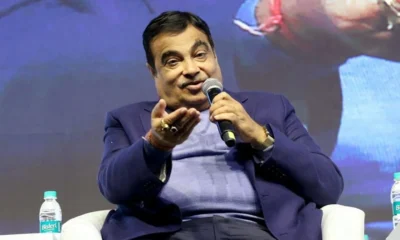

Nitin Gadkari flags Delhi air pollution, says two-day stay causes infection
-


Rahul Gandhi alleges institutional bias, questions electoral system during Berlin address
-


BJP minister claims rift between Rahul and Priyanka Gandhi over Parliament speeches
-
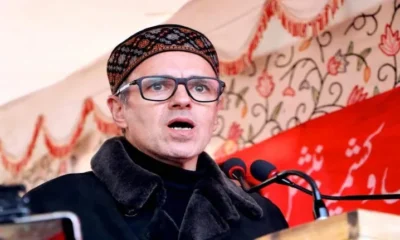

Omar Abdullah distances INDIA bloc from Congress’s vote chori campaign
-
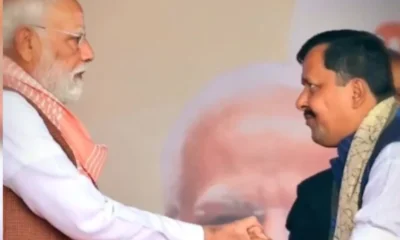

Nitin Nabin terms BJP working president role a party blessing, thanks leadership
-
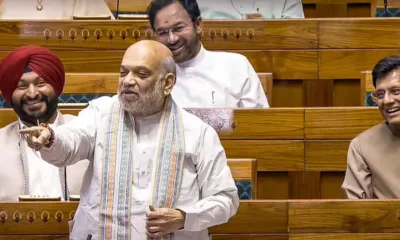

Amit Shah, Rahul Gandhi clash in Lok Sabha as debate on electoral reforms turns heated
India News
BJP and Shiv Sena reach broad seat-sharing deal ahead of BMC elections
BJP and Shiv Sena are close to finalising seat-sharing for 200 wards ahead of the BMC elections, while opposition parties intensify alliance talks across Maharashtra.
Published
8 hours agoon
December 27, 2025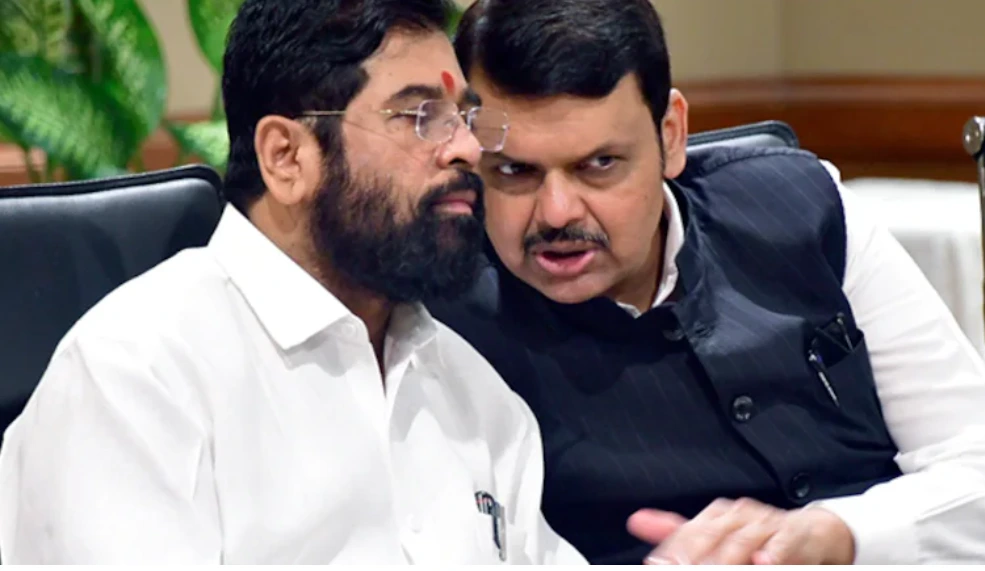
The BJP and Shiv Sena have almost sealed their seat-sharing arrangement for the upcoming Brihanmumbai Municipal Corporation (BMC) elections, with an understanding reached on 200 of the total 227 wards in Mumbai, according to sources. The civic body polls are scheduled to be held on January 15.
The agreement was discussed during a late-night meeting of the Mahayuti alliance, which includes the BJP, Shiv Sena and the Ajit Pawar-led NCP. The meeting took place at Maharashtra Chief Minister Eknath Shinde’s residence in Thane and focused on strategy for several key municipal corporations, including Thane, Kalyan-Dombivli and Navi Mumbai.
Sources said similar meetings are lined up for Mumbai and other civic bodies such as Chhatrapati Sambhaji Nagar, Panvel and Mira-Bhayandar, as alliance partners work to finalise ward-level arrangements and campaign planning.
Congress explores new alliances in Mumbai
In Mumbai, Congress leaders are scheduled to meet Prakash Ambedkar’s Vanchit Bahujan Aghadi as the party looks to rebuild its alliance structure after parting ways with the Shiv Sena (Uddhav Balasaheb Thackeray faction). The distancing followed Sena (UBT)’s decision to join hands with the Maharashtra Navnirman Sena led by Raj Thackeray.
Sena (UBT) MP Sanjay Raut has confirmed that the party will contest the BMC elections in alliance with the MNS and the NCP led by Sharad Pawar. The inclusion of the NCP (Sharad Pawar faction) comes after Sharad Pawar rejected a proposal from the Ajit Pawar-led faction that offered limited seat allocation.
Despite the split, sources indicated that discussions may continue, with meetings expected between Sharad Pawar’s daughter Supriya Sule and her cousin Ajit Pawar to determine future political moves.
Local body strategies take shape across Maharashtra
Meanwhile, MNS chief Raj Thackeray is set to hold a meeting with party leaders at his Shivtirth residence to finalise the party’s election strategy, including campaign issues and candidate selection.
In Chhatrapati Sambhaji Nagar, Shiv Sena MLA and minister Sanjay Shirsat will meet BJP leaders, including state ministers Chandrakant Bawankule and Atul Save, to discuss preparations for the civic polls.
Seat-sharing talks are also underway in Mira-Bhayandar, where Shiv Sena leader Pratap Sarnaik and BJP MLA Narendra Mehta are expected to hold discussions. The Ajit Pawar-led NCP, however, is planning to contest the elections independently in the region.
Panvel is set to witness a major opposition meeting involving Sena (UBT), Congress, MNS, NCP (SP), Samajwadi Party and the VBA. The gathering, led by the Peasants and Workers Party, will focus on finalising seat-sharing arrangements and joint election strategies.
India News
Op Aaghat 3.0: Delhi police arrest over 280 accused ahead of New Year celebrations
Delhi police arrested over 280 accused and detained more than 1,300 individuals under Operation Aaghat 3.0 ahead of New Year, seizing weapons, drugs, liquor and stolen items.
Published
10 hours agoon
December 27, 2025
Delhi police carried out a large-scale preventive crackdown across sensitive pockets of the national capital ahead of New Year, arresting hundreds of accused and detaining over a thousand individuals to ensure peaceful celebrations.
The overnight operation, conducted under Operation Aaghat 3.0, focused on crime-prone areas and resulted in major seizures, including illegal weapons, narcotics, illicit liquor, cash and stolen property, according to police officials.
Major arrests and seizures during the drive
As part of the intensified security drive, at least 285 accused were arrested under various legal provisions, including the Arms Act, Excise Act, NDPS Act and Gambling Act. In addition, 504 people were detained as a precautionary measure to prevent any untoward incidents during the festive period.
Police officials said the operation led to the recovery of 21 illegal weapons, including country-made pistols, along with 20 live cartridges and 27 knives. Authorities also seized over 12,000 quarters of illicit liquor, around Rs 2.5 lakh in cash, and nearly 7 kg of cannabis from different locations.
Focus on habitual offenders and vehicle theft
The crackdown also targeted repeat offenders. Under the operation, 116 habitual offenders, referred to by police as “bad characters,” were taken into custody, while 10 property offenders were arrested.
To curb vehicle-related crimes during New Year celebrations, police dismantled auto-lifting networks and arrested five auto-lifters. During the raids, 231 two-wheelers and one four-wheeler were seized.
Action against gambling and stolen goods
In a parallel action against gambling activities, police recovered Rs 2.3 lakh in cash. The operation also led to the recovery of about 210 stolen or lost mobile phones, offering relief to several complainants.
Apart from arrests and detentions, a total of 1,306 individuals were rounded up under preventive measures, officials added, stating that the coordinated effort was aimed at maintaining law and order and ensuring a crime-free New Year in the capital.
India News
Over 2,000 Maoists surrender under Chhattisgarh rehabilitation policy, says CM Vishnu Deo Sai
Chhattisgarh Chief Minister Vishnu Deo Sai said more than 2,000 Maoists have surrendered under the state’s rehabilitation policy, which offers skill training, financial assistance and land support.
Published
11 hours agoon
December 27, 2025
Chhattisgarh Chief Minister Vishnu Deo Sai on Friday said that more than 2,000 Maoists have surrendered so far under the state’s rehabilitation policy, asserting that the government is committed to treating surrendered cadres fairly and supporting their reintegration into society.
Addressing the issue, the Chief Minister said the state government has repeatedly appealed to Maoists to abandon violence and gunfire and return to the mainstream of development. He said the impact of these efforts is now visible, with a large number of cadres laying down arms.
According to Vishnu Deo Sai, the rehabilitation framework focuses on long-term welfare. Surrendered Maoists are being provided skill training along with monthly financial assistance of Rs 10,000. He added that the new policy also includes provisions for allotment of land for farming and land to build houses in urban areas, aimed at securing their future and livelihood.
Fresh surrenders reported from Bijapur
Earlier, 34 Naxals surrendered in Chhattisgarh’s Bijapur district under the state government’s rehabilitation initiative titled Poona Margham: Punarvas Se Punarjeevan (Return to the Mainstream: Social Reintegration through Rehabilitation). Police officials said the surrendered cadres were carrying a cumulative reward of Rs 84 lakh.
Officials noted that the latest surrenders reflect the growing impact of sustained anti-Naxal measures combined with confidence-building initiatives focused on welfare and reintegration.
Centre’s target to eliminate Naxalism by March 2026
The Chief Minister’s remarks come amid the Central Government’s stated goal to eradicate Naxalism from the country by March 2026 under the leadership of Prime Minister Narendra Modi. Authorities believe that rehabilitation-driven policies, along with security operations, are playing a key role in weakening the influence of Left-wing extremism in affected regions.

CBI moves Supreme Court against suspension of Kuldeep Sengar’s life sentence in Unnao rape case

Bangladeshi singer James’ concert cancelled after mob attack in Faridpur

Op Aaghat 3.0: Delhi police arrest over 280 accused ahead of New Year celebrations

BJP and Shiv Sena reach broad seat-sharing deal ahead of BMC elections

Over 2,000 Maoists surrender under Chhattisgarh rehabilitation policy, says CM Vishnu Deo Sai

BJP and Shiv Sena reach broad seat-sharing deal ahead of BMC elections

Op Aaghat 3.0: Delhi police arrest over 280 accused ahead of New Year celebrations

Over 2,000 Maoists surrender under Chhattisgarh rehabilitation policy, says CM Vishnu Deo Sai

Bangladeshi singer James’ concert cancelled after mob attack in Faridpur

CBI moves Supreme Court against suspension of Kuldeep Sengar’s life sentence in Unnao rape case
Afghan Men Try To Hang With The Jet Engine Of The Aircraft in Kabul- Afghanistan News – Kabul News
Trending Top 10 News: 10000 Crore Fine on Flipkart, Apple to Launch Unique Feature, Hdfc Bank Job Ad
Trending Top 10 News: Nokia 6310, Apple sales, Bachpan ka Pyar Video Kid, Dainik Bhaskar IT Raid
Trending Top 10 News: Canada bans Indian flights, Rain in Delhi NCR, AIMIM Twitter hacked, Raj Kundra case
Trending Top 10 News: Shein India, Apple New Service, Pocket Oxygen, Oppo Launched New Phone
Trending
-

 India News12 hours ago
India News12 hours agoCBI moves Supreme Court against suspension of Kuldeep Sengar’s life sentence in Unnao rape case
-

 India News11 hours ago
India News11 hours agoBangladeshi singer James’ concert cancelled after mob attack in Faridpur
-

 India News10 hours ago
India News10 hours agoOp Aaghat 3.0: Delhi police arrest over 280 accused ahead of New Year celebrations
-
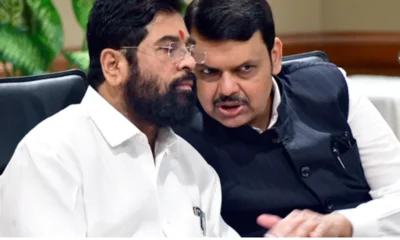
 India News8 hours ago
India News8 hours agoBJP and Shiv Sena reach broad seat-sharing deal ahead of BMC elections
-

 India News11 hours ago
India News11 hours agoOver 2,000 Maoists surrender under Chhattisgarh rehabilitation policy, says CM Vishnu Deo Sai

